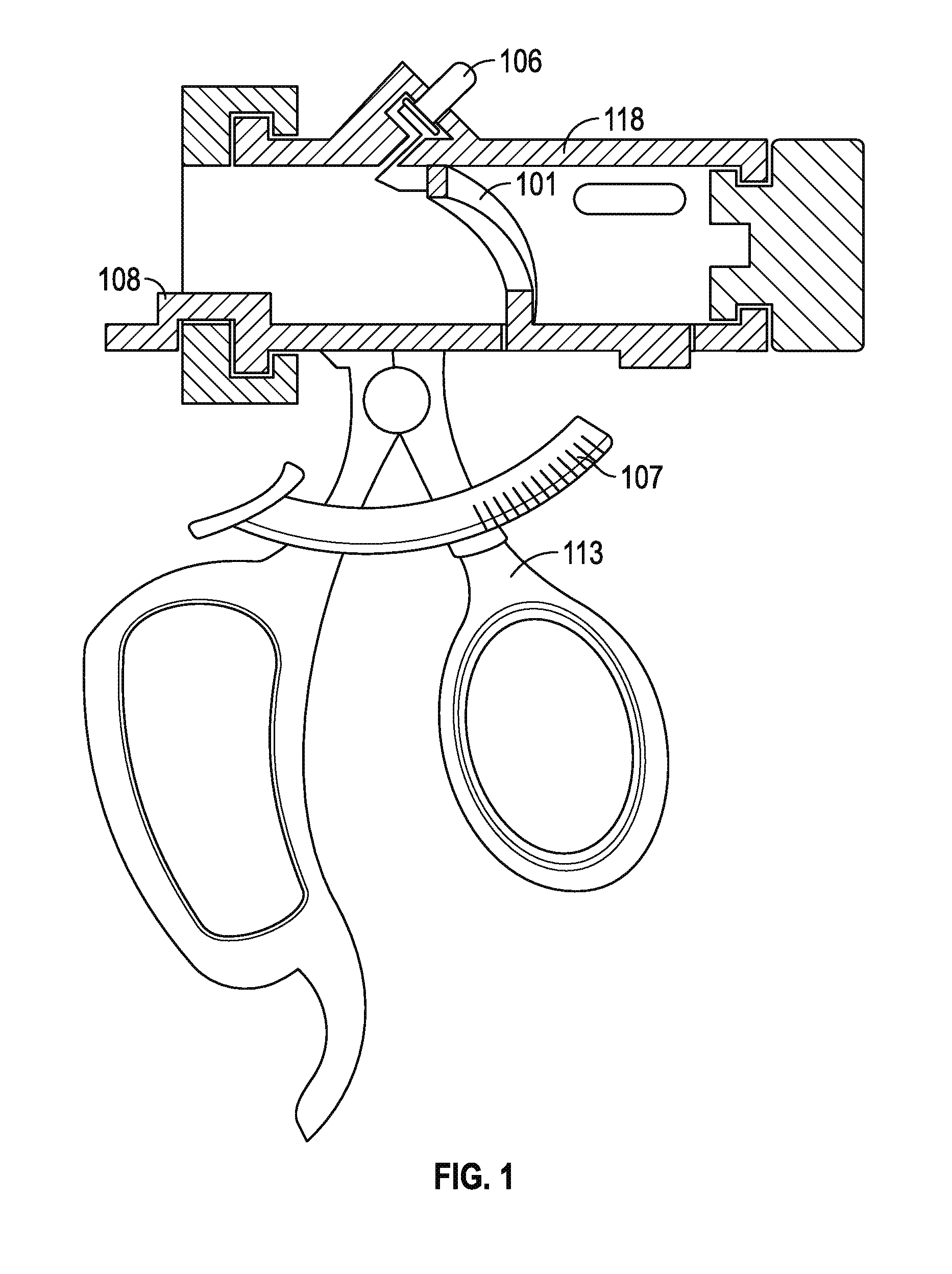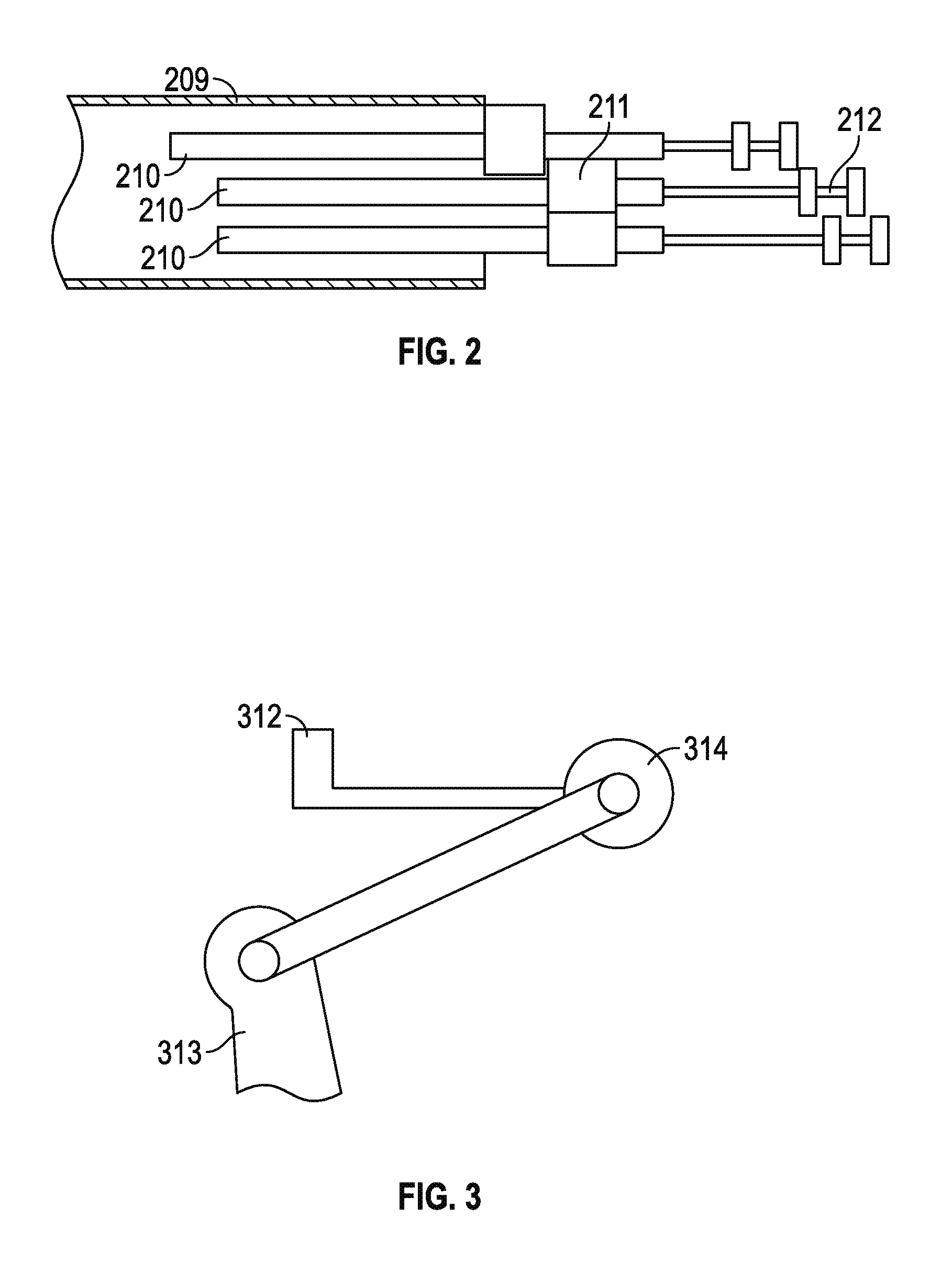Surgical instrument with multiple instrument interchangeability
a technology of multiple instruments and interchangeability, applied in the field of surgical instruments with multiple instrument interchangeability, to achieve the effect of reducing the time currently used for instrument switching, rapid advancement/retraction of laparoscopic/thoracoscopic/minimum, and reducing the time required
- Summary
- Abstract
- Description
- Claims
- Application Information
AI Technical Summary
Benefits of technology
Problems solved by technology
Method used
Image
Examples
Embodiment Construction
[0039]Detailed descriptions of one or more embodiments are provided herein. It is to be understood, however, that the present invention may be embodied in various forms. Therefore, specific details disclosed herein are not to be interpreted as limiting, but rather as a basis for the claims and as a representative basis for teaching one skilled in the art to employ the present invention in any appropriate manner.
[0040]Wherever the phrase “for example,”“such as,”“including” and the like are used herein, the phrase “and without limitation” is understood to follow unless explicitly stated otherwise. Similarly “an example,”“exemplary” and the like are understood to be non-limiting.
[0041]The terms “comprising” and “including” and “having” and “involving” (and similarly “comprises”, “includes,”“has,” and “involves”) and the like are used interchangeably and have the same meaning. Specifically, each of the terms is defined consistent with the common United States patent law definition of “c...
PUM
 Login to View More
Login to View More Abstract
Description
Claims
Application Information
 Login to View More
Login to View More - R&D
- Intellectual Property
- Life Sciences
- Materials
- Tech Scout
- Unparalleled Data Quality
- Higher Quality Content
- 60% Fewer Hallucinations
Browse by: Latest US Patents, China's latest patents, Technical Efficacy Thesaurus, Application Domain, Technology Topic, Popular Technical Reports.
© 2025 PatSnap. All rights reserved.Legal|Privacy policy|Modern Slavery Act Transparency Statement|Sitemap|About US| Contact US: help@patsnap.com



